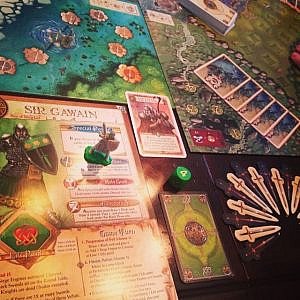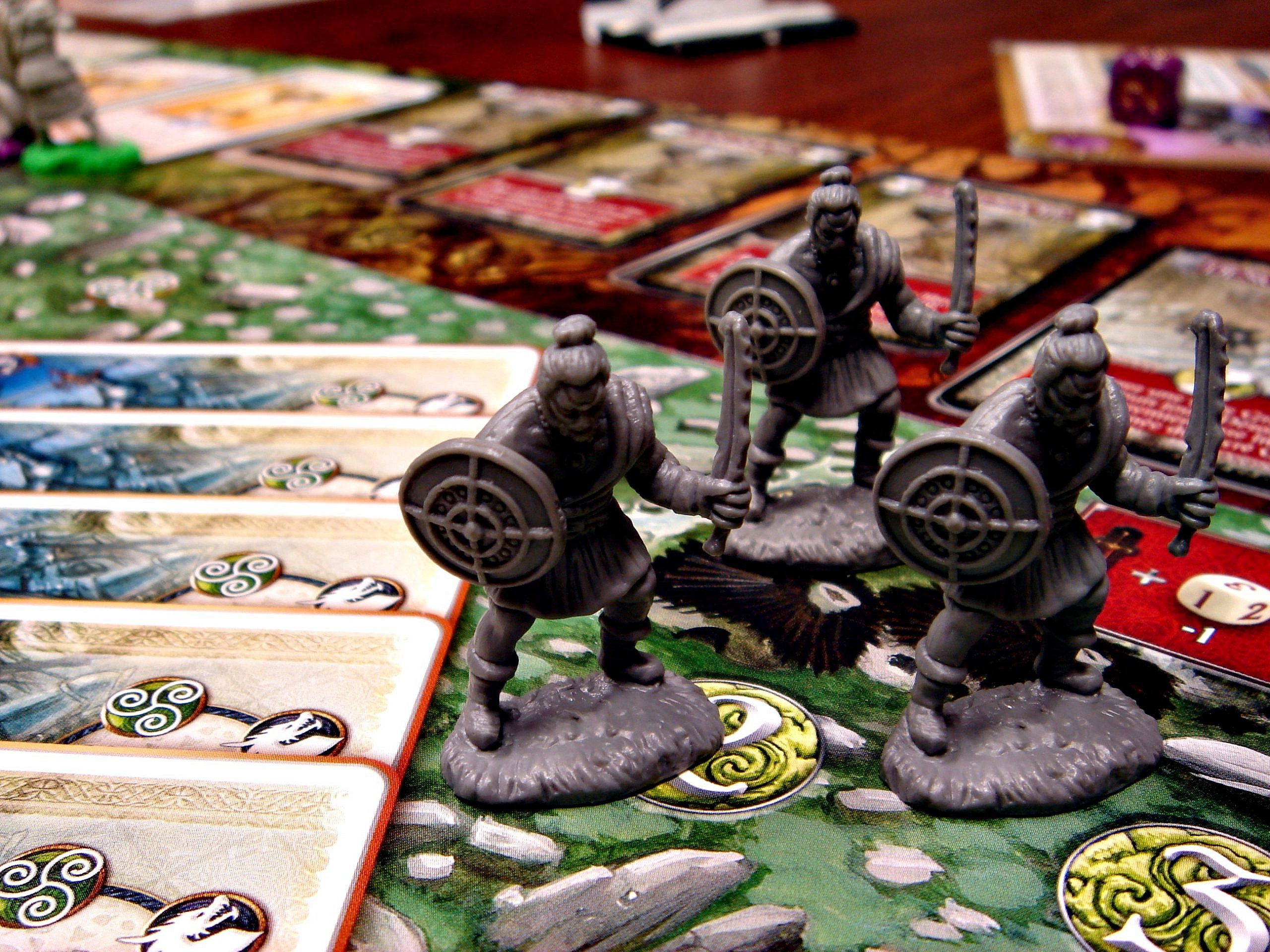If you want to play a board game and learn a myth, Shadows over Camelot would be one of the best board games you will consider immersing in. It is a corporative game – combat between the rule and players. However, this is not any corporative game because of the narrative, mechanics, and theme contained in the box. The name “Camelot” lets us know the theme embedded behind the board: Welcome all players to the battle between King Arthur and his knights; and Mordred and Saxons – Good and Evil.
The game was designed by Bruno Cathala and Serge Laget and published by Days of Wonder. It consists of the vital story of King Arthur and his knights when Mordred attacks the UK. The Camelot is the center of combat. Players need to become the King and his five knights to prevent the loss of the fortress based on a turn-based system in which knights and evil (controlled by game rules) do action switch back and forth. Even if the box says the game is 60 – 80 minutes playing, my friend and I always spend at least 100 minutes to end the game. The game, personally, is super hard fun. And we usually lost the combat.
One of the reasons that we simply lose is because of the game mechanic, which creates only one way to win – gaining seven white swords, but three ways to lose – all players dead, acquiring seven black swords or 12 siege engines. Elements from the original myth appear on the game board and rules – Holy Grail, Excalibur, Lancelot’s Armor – which players need to collect to fight back, as with the original myth. The way to collect those, nevertheless, is not straightforward since every item needs strong collaboration from players. One mistake would affect the late game and destroy the whole strategy created. The difficulty of winning is the thing I really like about the game encouraging players to communicate the combat strategy like they are actual knights. Communication is just a thing. If players cannot keep calm and strict with strategy, they will simply lose. And anger often happened when my friends and I became knights of the Camelot.
Another reason is that the game mechanic is not only a corporative mechanic but also embeds a “traitor” mechanic (the black knight) in every gameplay. This is an exciting part of this game because the traitor element is similar to the original story of King Arthur – to backstab the army and help evil to conquer. Players do not know who the traitor is or which games do not have a traitor. This starting point of looking out for the traitor creates excellent pressure to create unique dynamics in every gameplay. The fun part is that whenever a traitor dies or reveals themselves, the game is more difficult to win since players both lose a friend and enhance the evil’s power. The one who plays the traitor may love the given ability to agitate other knights (players) – add more Picts and Saxons, destroy other players’ Holy Grail cards, and adjust their friend strategies of fighting Dragon – they, nonetheless, may be hated at the end of the game. The traitor mechanic, of course, fulfils the fans and teases players’ minds which I bet you to play once to experience that feeling.
To sum up, Shadows over Camelot is a complex, fun, fantastic corporative game that the fans of King Arthur will love since the mechanics, narrative, and elements are embedded in the original myth. It’s a masterpiece containing details that the game is not simply to win, but it’s super fun to play problem-solving with your mind and friends. The difficulty of mechanics is the key to immersing players and encouraging them to communicate the combat strategies as Knights of the Round Table.
Basic Info.
Designers: Bruno Cathala and Serge Laget
Publisher: Days of Wonder
Release Date: 2005
Number of players: 3 – 7
Playing time: 60 – 90 minutes
Ages: 10+
Picture: “Shadows over Camelot” by MeoplesMagazine is licensed under CC BY-NC-SA 2.0.
Picture: “The guys are playing Shadows Over Camelot #shadowsovercamelot #play #game #boardgame #play #friday #afternoon #balcony” by elasticcamel is licensed under CC BY-NC-SA 2.0.
Picture: “Shadows over Camelot #Gameday #daveday #boardgames #gettingtgegangbacktogether” by mikelikes2teach is licensed under CC BY-NC-SA 2.0.
Picture: “Image” by gadl is licensed under CC BY-SA 2.0.



